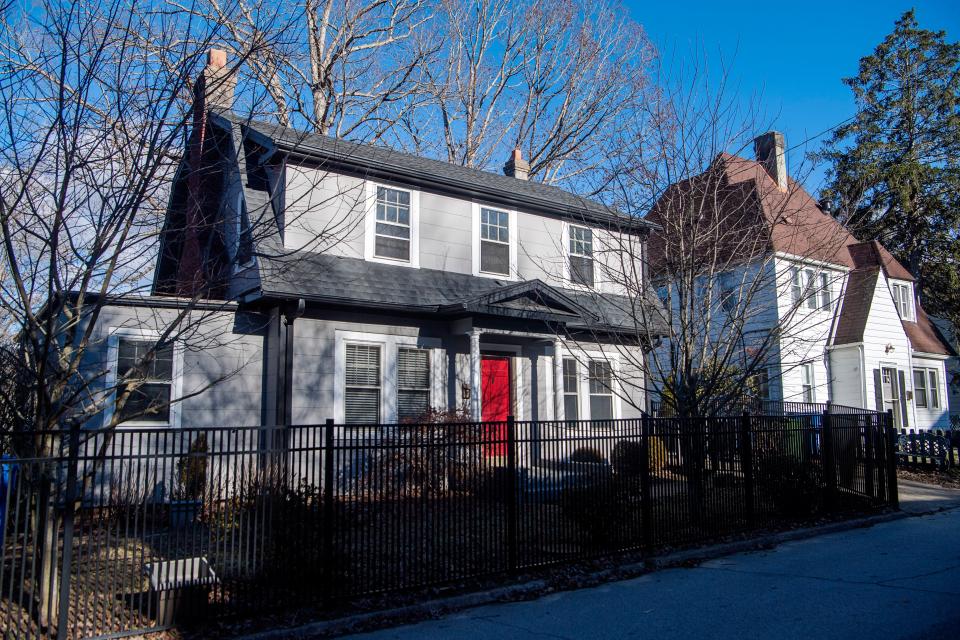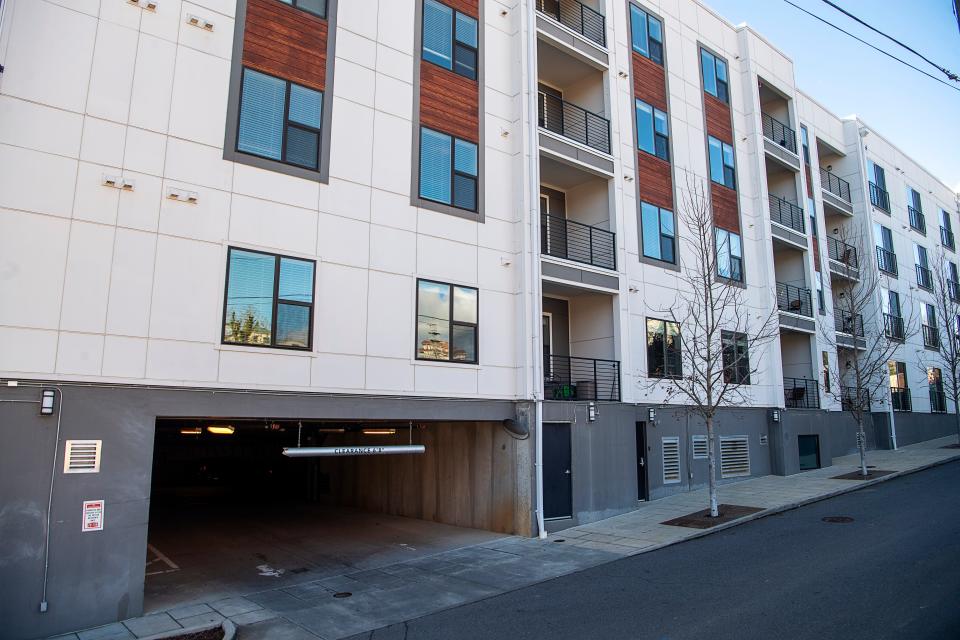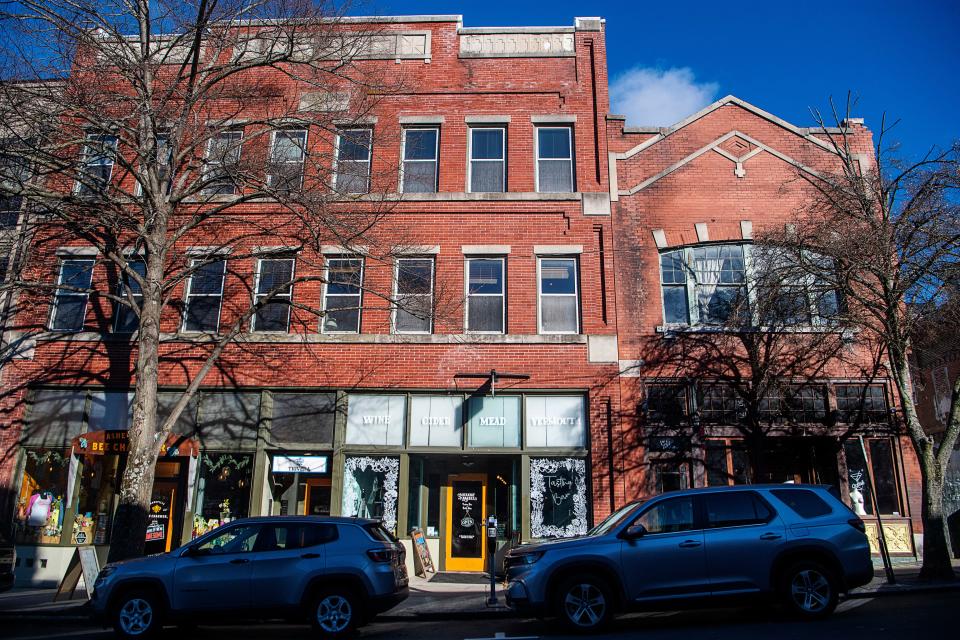Where's the cheapest rent in Asheville? Fair market rent up 78% in five years.
ASHEVILLE - In 2019, the fair market rate for a one-bedroom apartment in Asheville was $799. For 2024, it's $1,428 — a 78% increase over a span of just a few years.
The rapid rise in housing costs have been the subject of much conversation around Asheville and nationally. From building more affordable housing to regulating Airbnb's to maintain lower housing costs — or using an Airbnb to substitute income — the range of solutions discussed have been broad.
Yet, how do you find housing in Asheville? Likely through one of the many multiple listing services in the area.
In mid-January, the Citizen Times captured Zillow rental data from the five closest zip codes to Asheville's central business district. In total, over 450 rental properties were collected. The analysis highlighted properties listed as single-family homes, apartments and townhomes.

The median rent for an Asheville one bedroom on Zillow is $1,479 a month — just barely below the reported fair market rent from the U.S. Department of Housing and Urban Development for Buncombe County in 2024. Yet, median rent for a two-bedroom apartment was $1,893 in the area, $200 above the area fair market rent reported by HUD. Asheville's fair market rent is the most expensive in the state.
In the Citizen Times analysis of January's rental market, median rent for 28801 — which includes downtown Asheville — was the most expensive zip code, with a median rent of $1,495 for a one-bedroom apartment. South Asheville — or 28803— was the cheapest, with a median rent of $1,439 a month for a one bedroom.
Notable properties include a $10,000 a month house in Woodfin and a $6,000 a month Broadway Street one bedroom apartment.

Living wage finds increase. Downtown too expensive?
The nearly 80% increase in the area median rent has led to a rapid rise in Asheville and Buncombe's living wage, which now sits at $22.10 an hour. In 2019, it was $13.65.
The area living wage is set by Just Economics Western North Carolina, a Asheville-based nonprofit which uses the HUD fair market rents to determine fair pay for employees. Workers have been feeling the crunch, too.
"You know, pre-pandemic we had a low vacancy rate and a high rental rate, but post-pandemic; it's a crisis all across the country and our crisis is just exacerbated," said Vicki Meath, executive director of Just Economics.

For those making 2024's living wage of $45,968 in Asheville, the yearly income is just below 80% of 2023's reported yearly median income in the region.
Matt Lassiter, a professor of history, urban and regional planning at the University of Michigan, said Asheville's situation is a familiar experience.
Lassiter, who has been coming to the area on and off since the 90's, currently lives in Kenilworth.

"I think what's happening here is what happened to Boulder 20 or so years ago, where you have people who are working in the service industry can't afford to live anywhere near where the jobs are getting pushed out of the rentals," Lassiter said of Asheville's rental market.
The economics of service workers not being able to live where they work leads to those leaving for locations nearby, and, likely, adding to the growth of smaller towns.
"You get this situation where everybody in the service industry had to live in a town that was 20, 30, 40 miles away — live in Canton. Live in Marshall," Lassiter said.
"Interestingly, it kind of helps those towns," Lassiter said. "Look at the breweries and the businesses that are opening up in Hot Springs or Marshall or other towns on the periphery, and that happened in Colorado too, where these like little towns outside of Boulder suddenly started to get their own economic dynamics."
To hear Meath tell it, other costs, such as transportation, might also factor into the rising cost of living for workers leaving the region.
"When we look at the cost of housing; we know that the cost of housing is more expensive if you live in the city of Asheville than it is if you live in Leicester," Meath told the Citizen Times about workers moving through WNC. "But also your transportation costs are likely to be a little bit lower if you live in the city of Asheville because you can also use public transit."
Meath said she that has often referred to Asheville as "little Boulder," but also draws comparisons to closer towns like Hilton Head.
"There are similar things going on there," Meath said. "Housing became too expensive that they couldn't find people to work in their restaurants and bars or cut their grass or clean their house."
"That's when many people in the community who were not struggling with affordable housing started to be interested in affordable housing," she said.

What tools does local government have?
One key aspect of urban development might be in play when it comes to housing; Buncombe County's history with zoning, or, rather, lack-of history.
While Buncombe County adopted zoning in the Limestone and Beaverdamm Townships in 1981, zoning was only adopted county wide in 2009.
"It really helps explain a lot of why Buncombe County looks the way it does," Lassiter said. "Because, if you go to Woodfin, there's trailer parks 600 yards from million-dollar homes."
The 28804 zip code includes Woodfin, where two of the highest priced home rentals — at $10,000 and $6,000 a month — were listed on Zillow.
Zoning is one of the few tools in North Carolina city-county toolboxes to design and help push housing investments. Meath says that because North Carolina does not allow rent control and cities have "questionable legal ability" to do mandatory inclusionary zoning, options are limited.
One of the major solutions could be using public land to incentivize more affordable housing.
"One thing that clearly is in our toolbox is how we use city and county owned land," Meath said.
Deed restrictions could allow cities to push for more affordable housing, with projects like the 319 Biltmore Ave. apartment plans as a development model, Meath said.
Lassiter notes the difficulty of balancing local interests with those who wish to develop properties with local interests, where many housing projects might see opposition for good reason. Yet, the process might not allow housing to be built quickly or even based on need.
"They used to do whatever they want," Lassiter said of housing developers. "And, post-World War II, for decades they created a radically inequitable, racially segregated, economically segregated housing landscape."
"But like, at some level, the pendulum has swung too far and it's made it difficult to build housing that single (people), the elderly people that families with young kids actually need," Lassiter said.
How was this data collected?
Only Zillow listings were included in the analysis of the five zip codes closest to Asheville's Central Business District.
All Zillow data was collected on Jan. 16. In total, the Citizen Times collected over 450 units of active housing on Zillow. Some listings have been added or removed since. Apartments, houses and townhomes without addresses were removed from the map of rentable units and some apartments could not be included.
For apartment complexes with multiple listings, apartments were added on a "number available" basis, meaning that only a number of units readily available were included in the data gathering process. In total, 285 apartments, 156 single family homes and 12 townhouse-style homes were included in the analysis.
Of those, 70 were one bedroom, 211 were two bedroom. 123 were three bedroom, 25 were four bedroom and five were five bedroom. There were only 16 studio apartments available for rent.
More: Affordable development proposed off New Leicester Highway: How many homes for sale?
More: WNC home prices set records in 2023, Asheville up 53% since 2019; solutions ahead?
Will Hofmann is the Growth and Development Reporter for the Asheville Citizen Times, part of the USA Today Network. Got a tip? Email him at WHofmann@citizentimes.com. Please help support this type of journalism with a subscription to the Citizen Times.
This article originally appeared on Asheville Citizen Times: Asheville rental market: $2163 median rent. Where is the cheapest?

